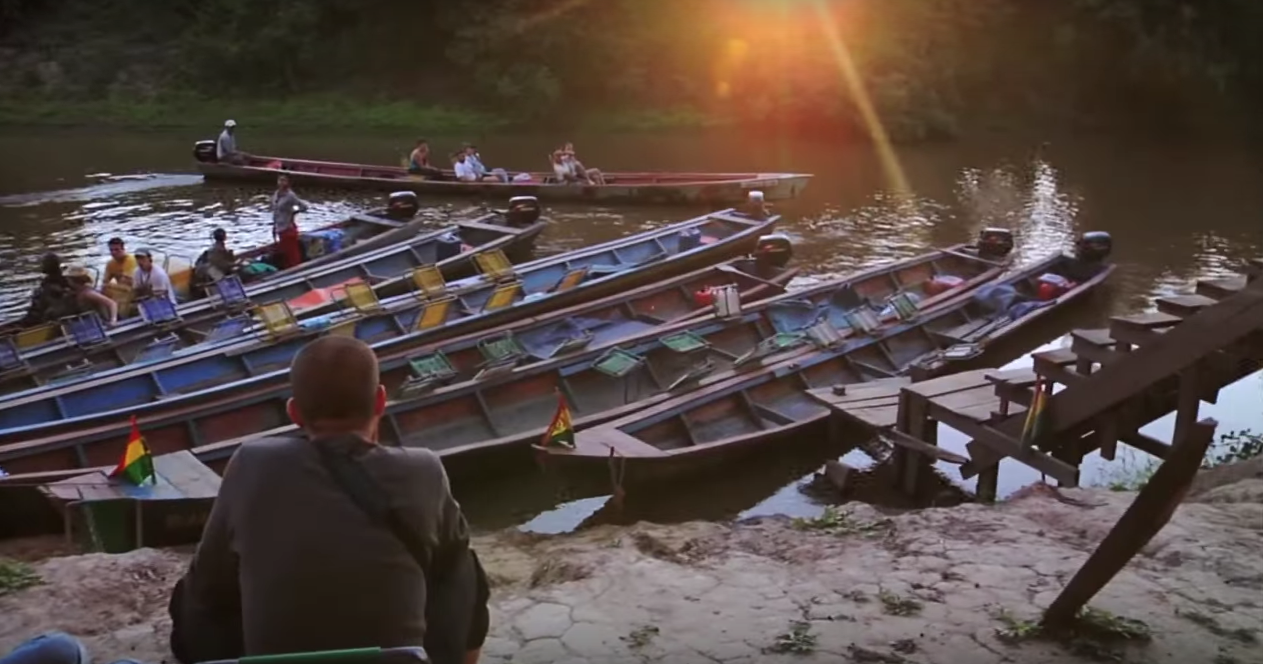Cinema Politica’s last screening of the season explores the harmful aspects of global tourism
From director Pegi Veil, Gringo Trails is an alternative and passionate look at the effects of global tourism on remote locations. The documentary is part of a fervent crusade to halt the mass stampede of tourists by exposing the cultural, economic and environmental repercussions they can lead to.
Veil’s film highlights the seemingly innocent backpacker culture and should be mandatory to watch for anyone who’s thought about a soul-searching, finding-myself and off-the-beaten-path visit to exotic destinations.
If you’re one of the people who search for unconquered territory, the road less travelled and untarnished authenticity, you won’t find it. And if you do, you probably shouldn’t be there in the first place.
The itinerary follows tourists’ adventures from South American forests to African villages to Asian spiritual centres. Veil interviews fellow travelers, travel writers, regional officials and indigenous people.
“Take nothing but memories, leave nothing but footprints”—this quote, by Chief Seattle, opens the documentary. But the footprints seem to be the problem.
Chief Seattle himself was a prominent indigenous figure, known for pursuing a path of accommodation to white settlers. Most notably, he argued in favour of ecological responsibility and respect of Native Americans. The city of Seattle, Washington was named after him.
In the Amazonian rain forest, Gringo Trails argues that animals have permanently migrated and adapted their life to accommodate the influx of people stomping through their homes. Some animals will not reproduce due to trauma. If this continues for several generations, the animal would become extinct, affecting the entire ecosystem.
Featuring interviews with several young backpackers who pride themselves on seeking out adventurous, low-cost travel, the film takes aim at their subtle arrogance.
Also included are comments by numerous native guides, who point out that tourists need more education about the places they visit. Veil contrasts this type of traveler to those of the country of Bhutan. Open to tourists since 1974, it adopted a “high value, low impact” policy geared to affluent travelers who pay USD$250 a day and are threatened with expulsion if they don’t adhere to the country’s traditions. This attracts a certain rare and elite class of traveler.
While some examples are extreme, the film shares stories of villages that now thrive on community-based tourism that is managed, contained and allows people to learn about new cultures and traditions.
How tourism affects destinations is multi-layered. Whatever the situation, the director agrees that it is the responsibility of all travelers to realize it is a privilege to visit a new country and not a right.
Despite its sad and cringe-inducing portraits—like the hordes of drunk backpackers passed out in their own vomit on a small Thai beach—Gringo Trails is ultimately hopeful. The basic goal in all these locations is finding a way to balance the host country’s financial needs with the inevitable disturbance to the environment by visitors.
With so few films devoted to this topic, Gringo Trails offers a refreshing counterbalance to the Hollywood view of exotic people and places—think Eat, Pray, Love. Tourism will always exist so long as a desire to see the world does; therefore it is up to the traveler to think of the footprints they leave behind on their journey.
See Gringo Trails on Monday April 11 at 7 p.m. in room H-110 on Concordia University’s downtown campus. It will be the last documentary presented by Cinema Politica this season.
